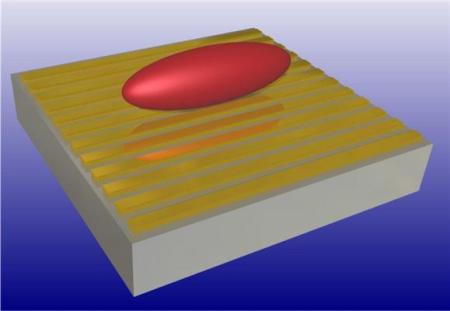University of Tübingen researchers are collaborating to develop the next generation of computers. Tiny gold wires of the order of a thousandth of a mm were made to interact with cold atoms.
Surface plasmons were generated using laser light to illuminate the gold wires and focus the light on the wire surface in a unique manner. These light fields may allow construction of optical computing devices and quantum information devices.
 A Bose-Einstein condensate is applied to plasmonic nanowires.
A Bose-Einstein condensate is applied to plasmonic nanowires.
Optical computing devices can make circuits faster and more efficient than existing technologies. Surface plasmons are helpful for transfer of data and they must be attached to elements for data storage for building of optical computing devices. Junior scientist, Dr. Sebastian Slama, has developed techniques for positioning the cold atoms close to the surfaces so that the atoms could interact with the bound light waves.
Atomic gases can be cooled to very low temperatures in vacuum chambers. Atoms do not behave like a classical gas at nanokelvin temperatures. They attain a stage wherein all atoms stay in a quantum state, by forming a Bose-Einstein condensate. This condensate can be considered as an equivalent to a large sized, single super-atom. External magnetic fields can be applied to move the super-atom to the surface, where the plasmon will influence the atom.
The results of the study were published in a recent issue of Nature Photonics. The scientists aim to make hybrid devices for quantum information and optical computing.